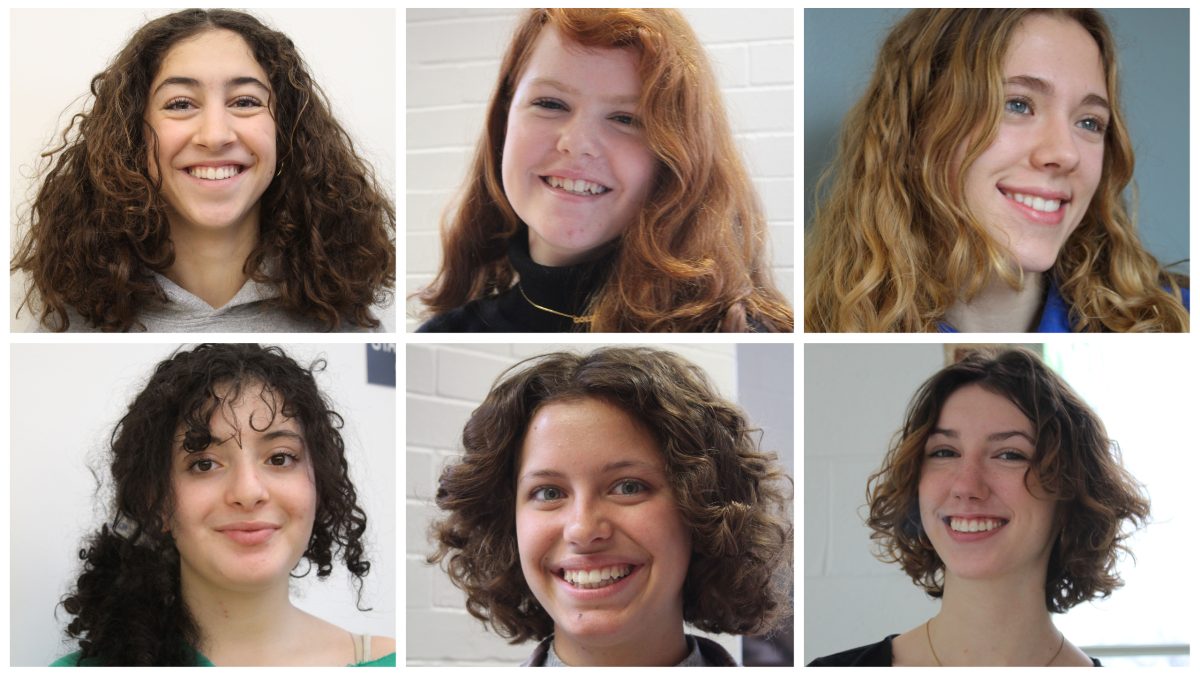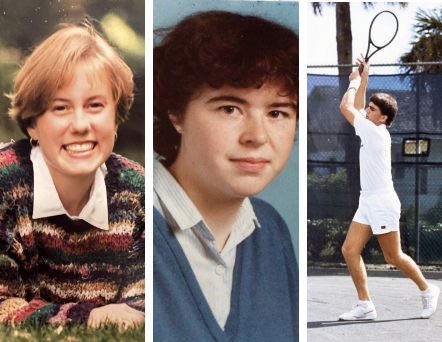A girl squeezes a quarter-sized amount of curl gel onto her palms. She carefully runs her product-coated hands through her curls, alternating between the praying hands and scrunching methods. Ten minutes later, she grabs a diffuser and begins the final, and lengthiest, step of her curly hair routine: drying her hair.
Curly hair is often considered messy and unkempt, whereas pin straight hair fits into Western beauty standards. This stigma is present in all forms of media, from Mia Thermapolis’ famous makeover in “The Princess Diaries” (which involved straightening her frizzy hair) to 13-year-old Chelsea Clinton’s curls being likened to a “dog” on The Rush Limbaugh Show in 1993.
Over the last decade, this stigma has lessened due to the rise of social media curly hair influencers and celebrities who embrace their natural curls. Nonetheless, beauty standards still favor straight hair, which has a detrimental effect on curly haired girls’ confidence.
Junior Jenna Loescher-Clark has type 2C hair, or defined waves. She points out that people with curly hair don’t always achieve their desired results from their hair routine, whereas straight hair is simpler to maintain. “It’s really frustrating because when you have straight hair, it’s a lot easier to do hairstyles and just put [your hair] up and get it out of your face,” she said. “But with curly hair, bad hair days are easy to come by. If you mess up one aspect of the routine, then the curls just come out ruined and weird.”
Junior Sophia Jemsby has type 3B hair, or spiral curls. Though she thinks curly hair has become trendier in recent years, she has noticed pressure for girls to adopt overly complicated hair routines in order to have flawless, frizz-free curls. “Anyone with curly hair has to have perfect curly hair like you see on TV, [but] curly hair is just so hard to maintain,” she said. “I don’t have the time for a 10 step curly hair routine, and it shouldn’t be the norm to have a 10 step curly hair routine.”

Beauty standards and the difficulty in maintaining “perfect” curls leads many girls to straighten their hair. Sophomore Margot Stavropoulos, who has type 3B hair, started straightening her hair at age eight and only began wearing her natural curls around eighth grade.
“Some people didn’t even realize that I had curly hair because I always had it up in a bun or a ponytail and it would just get really damaged from straightening it,” she said. “Natural curly hair looks so much better than straight hair for the majority of people with curly hair. And it was sad because I realized that a bit late.”
Seniors Sara Oueijan, who has type 2C hair, and Safiya Mugengana, who has type 3B hair, often straighten their hair for special occasions such as school dances and overseas trips. “I still struggle with loving my hair the way it is,” Oueijan said. “I definitely feel prettier with straight hair, which is something I’m working on.”
The stigma around natural curly hair is amplified for Black, Indigenous and people of color (BIPOC), whose hair is labeled crazy, unattractive and even dirty. “When you are not white and you have curly hair, there is a lot more ambiguity that you face than white people with curly hair… because it begins to distinguish ethnicity and it becomes a basis on which people discriminate,” Loescher-Clark said.
Sophomore Nadia Clinton, who has type 4A hair, or slight coils, and Mugengana both recall people touching their hair without their consent when they were younger. “In fourth grade, I didn’t really know how to do my hair… It was brushed out, dry and so frizzy, so people would want to touch it,” Mugengana said. “It made me feel like a spectacle.”
Additionally, Mugengana has noticed a difference in the way she is spoken to by strangers based on whether her hair is naturally curly or straightened. “I’m mixed, so I’ll tend to look more white with straight hair,” she said. “[People] are a little bit more polite and I think I’m also more approachable when I have straight hair.”
Moreover, though curly hair has recently become more widely accepted in the U.S., it remains stigmatized in many other countries. “In [BIPOC-dominated] countries like Algeria, there’s a lot of people that have curly hair, but they always straighten it,” freshman Tamila Akkache, who has type 3B hair, said. “It’s seen as messy or crazy or unclean, [so] a lot of people want to straighten their hair to seem more put together or more professional.”
Oueijan lived in Saudi Arabia for most of her life before moving to D.C. in the fall of 2020. “For the first time, I actually got compliments on my hair,” she said. “In Saudi, I never used to get compliments like, ‘Oh, you have such beautiful hair.’”
Ultimately, Loescher-Clark believes that the social pressures for girls to straighten their hair will continue to diminish over time. “There used to be a lot of stigma that curly hair was messy and that people with curly hair didn’t brush their hair or didn’t take care of themselves,” she said. “But with social media and people showing their curly hair routines, there’s a growing awareness that that’s just how hair texture can look on some people.”
By Maia Nehme

































































